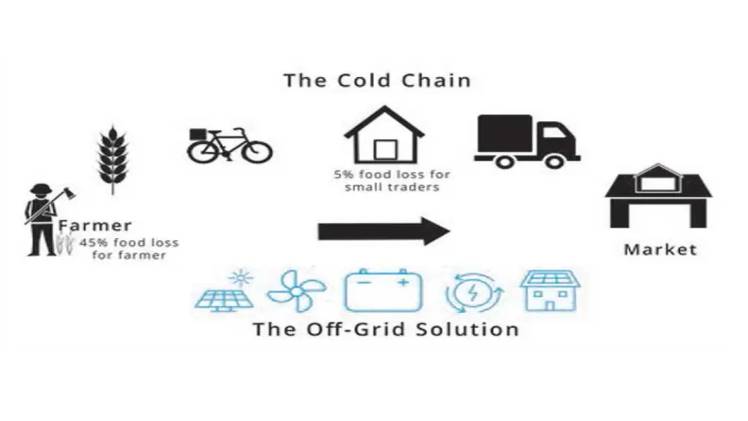Trends in Cold Chain Logistics: Innovations and Challenges

The world of logistics is ever-evolving, continually adapting to the changing demands of the industry. One of the most challenging aspects of logistics, cold chain, is the subject of countless innovations and also faces numerous challenges. We see technologies like freight forwarding software, freight forwarding systems, and freight forwarder software leading the charge, playing an instrumental role in shaping the future of cold chain logistics. This blog aims to shed light on these recent trends and challenges, and the freight forwarding solutions making a difference.
Advancements in Freight Forwarding Software
The digitization revolution in the freight industry has led to a major overhaul of cold chain logistics. With the introduction of advanced freight forwarding software, companies are now able to better manage complex, temperature-sensitive supply chains, providing enhanced oversight and control. Real-time tracking ensures that companies can monitor the status and location of their shipments at any given moment, thereby allowing immediate action if any deviations in the route or temperature conditions occur. Automated documentation simplifies the process of paperwork, minimizing the risk of data loss or misinterpretation and improving operational efficiency.
Moreover, the application of data analytics in freight forwarding software is paving the way for predictive modeling and strategic decision-making. Data analytics provides in-depth insights into various elements of the supply chain, such as transportation times, shipment conditions, and delivery performances. It helps identify bottlenecks, inefficiencies, and potential risks, enabling companies to optimize routes, improve delivery timings, and reduce operational costs. As a result, these digital transformations are fostering a more reliable, efficient, and resilient cold chain logistics system, significantly improving the quality of service while minimizing losses due to spoilage or delays.
Integration of Freight Forwarding System with IoT
The blend of the Internet of Things (IoT) with freight forwarding has created a new model in the industry. IoT-enabled devices are transforming the way temperature-sensitive goods are transported and monitored, delivering comprehensive and accurate data about environmental conditions such as temperature, humidity, and vibration levels. These sensor-based technologies enable real-time monitoring, significantly enhancing the ability to maintain product integrity during transit. The constant flow of data can alert logistics operators to potentially adverse conditions, allowing them to intervene promptly and mitigate any negative impacts on the cargo. This technology not only enhances the quality and safety of transported goods but also increases accountability and traceability in the supply chain.
Furthermore, the predictive maintenance capability that IoT brings to freight forwarding is a game-changer. Utilizing machine learning algorithms and the vast amounts of data gathered from IoT devices, predictive maintenance models can foresee potential malfunctions or failures in transportation equipment. This means companies can schedule maintenance tasks proactively, thus minimizing downtime and avoiding costly emergency repairs or replacements. The ability to anticipate potential issues before they escalate significantly improves the reliability of operations and prevents potential losses. It demonstrates how IoT is shaping the freight industry into a more efficient, resilient, and intelligent system.
AI and Machine Learning in Freight Forwarder Software
Artificial intelligence (AI) and machine learning (ML) are new technologies being used in software for freight companies. They help these companies make better decisions and plan better routes by looking at data from the past to guess what might happen in the future. For example, these technologies can look at all the times when something went wrong in the past, like bad weather causing a delay, and guess when something similar might happen again. This gives companies a chance to plan ahead and avoid problems before they happen.
Also, AI and ML help companies use their resources in the best way possible. They can figure out the best routes to take for deliveries, considering things like traffic, road conditions, and the fastest way to get to the destination. They can also decide which trucks to use and when so that companies can deliver goods faster and more efficiently. This way, AI and ML make the process of moving goods from one place to another smoother and easier for freight companies.
Challenges in Cold Chain Logistics
Despite these groundbreaking innovations, the cold chain logistics sector continues to face several challenges:
1- Maintaining Optimal Temperature Conditions
Even with sophisticated freight forwarding software and systems, maintaining optimal temperature conditions remains a significant challenge. Fluctuations during transport can damage temperature-sensitive goods, leading to financial losses and potential health risks in the case of pharmaceuticals or food items. It requires continuous monitoring and swift action in case of any deviation, which can be strenuous and costly.
2- Complex Regulatory Compliance
Different countries have different rules and regulations for transporting temperature-sensitive goods. Maintaining these varying regulations, ensuring compliance, and dealing with documentation can be complex and time-consuming, even with efficient freight forwarding solutions.
3- High Operational Costs
The cost of advanced technology, specialized transportation, energy consumption, and trained staff makes cold chain logistics a high-cost operation. Companies need to balance these costs with the efficiency and benefits provided by innovative solutions like AI and IoT-integrated freight forwarding systems.
The Future of Cold Chain Logistics: Freight Forwarding Solutions
The freight forwarding solutions of the future will continue to evolve, adapting to the dynamic needs of the industry. With advancements in AI and ML, the predictive capabilities of software will improve, helping to identify potential disruptions and optimize operations.
Blockchain technology is another promising trend. It can improve transparency, traceability, and security in the cold chain, instilling trust among all stakeholders.
Moreover, the use of eco-friendly refrigerants and energy-efficient practices will gain prominence as the world gravitates towards sustainable solutions.
In conclusion, the future of cold chain logistics is both exciting and challenging. While innovations like freight forwarding software, freight forwarding systems, and freight forwarder software continue to revolutionize the industry, numerous challenges need addressing. However, with technology evolving at an unprecedented pace, the potential for more effective and efficient solutions is limitless. As we advance, the focus should be on developing solutions that not only overcome challenges but also contribute to sustainable and responsible logistics.
Logitude World provides freight forwarders with advanced freight forwarding software to manage all operations on one digital platform and deliver superior freight forwarding services.





